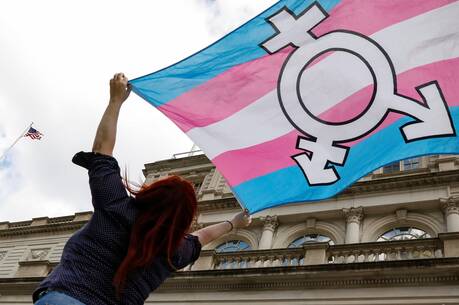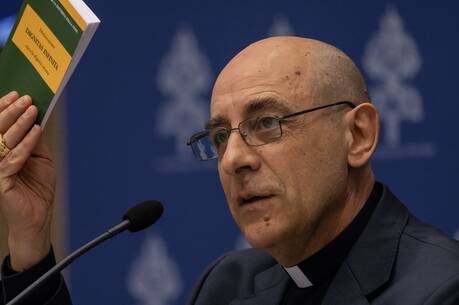Bush and Branches
Your editorial, “Abuse of Office” (4/28), needs clarification. You assert that President Bush made so-called “power gains” with the acquiescence of the legislative and judicial branches. Really? My dictionary defines “acquiescence” as acceptance without protest. There has been nothing but protest from Congress over the last two years, but the protesters lost. As for the judiciary, the Bush administration has largely won in the courts, with a few genuine setbacks. But the branches have all had their say, and they said “keep going” to President Bush.
Vincent J. Gaitley Bryn Mawr, Pa.
Dangerous Waters
Two articles in America on 4/28 (“Ending the Death Penalty,” by Dale S. Recinella, and “The Court at a Crossroads,” by Antony Barone Kolenc) refer to “the five Catholic Supreme Court justices.” I don’t think religious affiliation should be a factor in their decision-making or our interpretations of their decisions. This approach disturbs me as a “thinking Catholic,” but something else disturbs me more: what is the definition of a Catholic, and who does the defining? Is it No. 837 in the Catechism of the Catholic Church, or the slogan “once baptized, always counted” or something in between?
These are dangerous waters in which to swim. Let us not be in haste to embrace someone who may later embarrass us!
(Msgr.) John M. Ryan Buffalo, N.Y.
Surrendering the Field
The author of “Aiding and Abetting?” (Letters, 5/5) criticizes America for publishing a U.S. Army advertisement recruiting chaplains. The ire of the writer is understandable from an anti-war position, but the argument overlooks a critical reality beyond the immorality of our current conflict.
Rightful opposition to the war has resulted in the avoidance of chaplain service by numerous members of the clergy of mainline faith communities, apparently leaving the field wide open for those of fundamentalist persuasion to become the majority of current chaplains. Many of these chaplains can find ample opportunity in both military academies and on the battlefield for proselytizing and proclaiming what seems to others to be a simplistic, “magic-wand” solution to every concern: “Believe in Jesus as your savior.” But the truth of that Christian belief goes far beyond the view of the Lord as a mere problem-solver.
Chaplains should not, of course, offer blessings on the war, but the blessings of a listening ear for deep suffering, of a builder of community and prayer amid violent chaos and of wise direction for military men and women facing unspeakable challenges.
I am acquainted with a pastor who, with immense agony of spirit, has served as a chaplain in both wars in Iraq, seeing his mission as bringing an expansive faith to challenge and support both service personnel and other chaplains.
M. Gratia L’Esperance, R.S.M. Rochester, N.Y.
Subtle Artistry
Tad Dunne’s image of the Trinity that accompanies “Who Is God for You?” (5/12) is awesome. The Creator holds the world in gentle hands; the Word made flesh is symbolized by a mother’s body; the Spirit of love is visualized in the heart shape at the neck of the garment. And is the world also the womb of this gentle, peaceful image of God? Thanks to Dunne and America for quietly publishing this image on Mother’s Day.
Jim Hasse, S.J. Cincinnati, Ohio
Not So Subtle Artistry?
I would like to draw attention to the photo of two religious sisters used in your coverage of the visit to the United States by Pope Benedict XVI (“Benedict in America,” 5/12). You selected a picture of two religious sisters in full habit, the likes of which most of us never see today. I’m sure such sisters do exist but am flummoxed by your choice. Perhaps the editors thought it more appropriate or more obvious than a picture of sisters wearing the ordinary dress of women in general? Do you find women in full habit ironically more glamorous than their middle-aged contemporaries in the ordinary apparel of most sisters today?
As someone who has worked with sisters of many religious orders over the major part of my life and admired the dedication and strength of these women, I find it insulting and ominous that America chooses a photo like this to accompany an article about the pope’s visit. Are you using photos of the nuns you wish to see?
Denise J. Doyle San Antonio, Tex.
The Great C
I was grateful for “Shadows in Prayer,” by James Martin, S.J. (3/17), in which he describes the “seven D’s” of the spiritual life. The significance of the great spiritual traditions of the church often seems underplayed to me, both in the life of the church itself and in mainstream religious periodicals. No wonder people (including Mother Teresa herself) were thrown by her experiences of spiritual darkness.
Articles like this help shed light on what prayer is really about: learning to surrender to God’s mysterious ways of transforming us into our best selves. We need to remember that darkness and desolation are only parts of this mystery. There is also the great C of consolation, where experiences of God’s love, life and deep joy ground and give impetus to most of the D’s Martin mentions. The many spiritual traditions of the church are wonderful tools to help people through the transformation process.
Cissy McLane Seattle, Wash.







